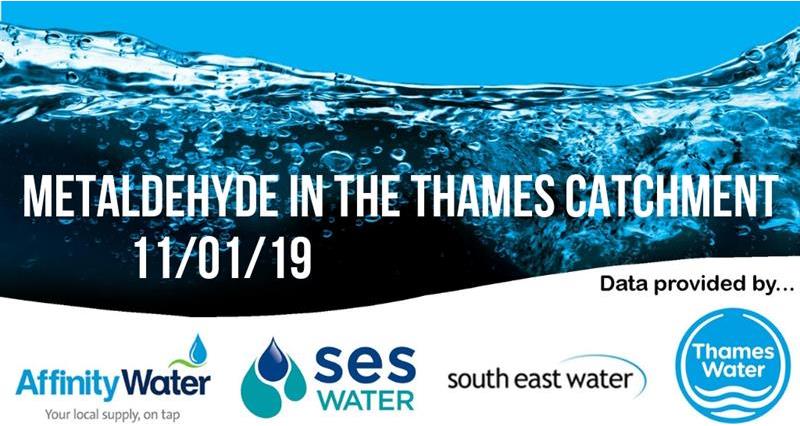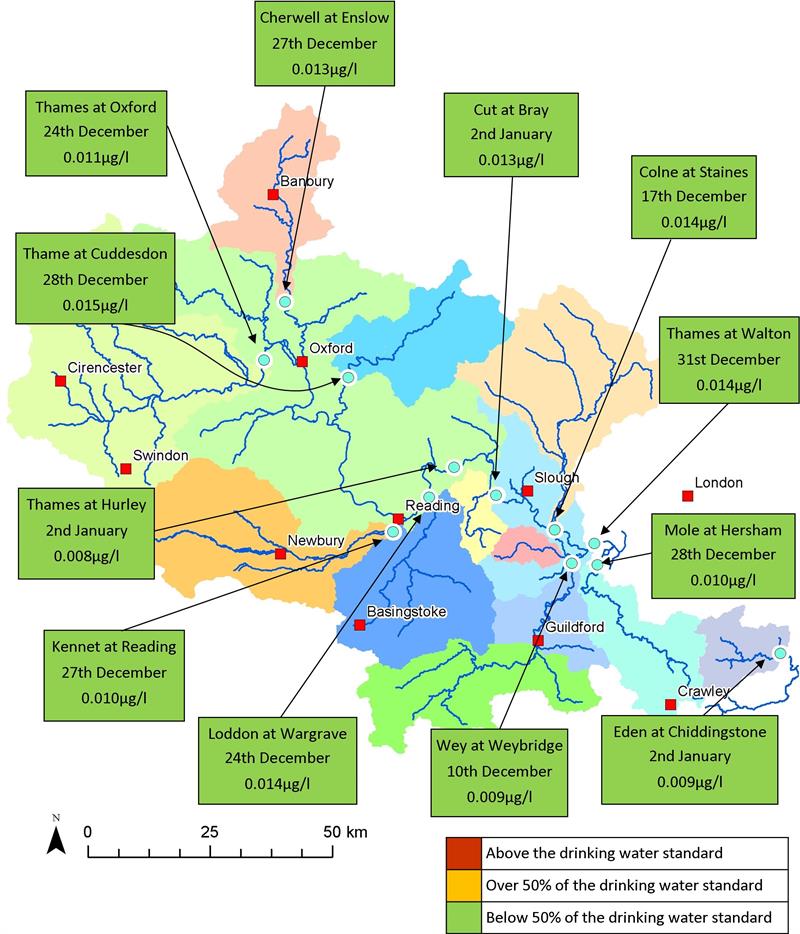Metaldehyde in the catchment
In preparation for the phasing out of metaldehyde over the next 18 months, consider reducing your reliance on chemical control measures by adopting a wider range of options in your Integrated Pest Management (IPM) programme to control slug numbers. If you need to use chemical control, use ferric phosphate-based pellets instead of metaldehyde and, as always, follow stewardship and best practice guidelines. In some areas there are water company funded initiatives available to support you until the ban comes into force, so contact your local water company to find out more. Note that contact details can be found at the bottom of this update.
Please see the map and graph below for 12 monitoring locations within the Thames catchment.
Latest Results
The latest results show that metaldehyde concentrations across all 12 monitoring sites have remained below the drinking water standard this week. The weather has been predominantly dry and cold with only a few days of rainfall in the run up to the New Year. Much like last week, the dry and cool conditions are set to continue through to next week with little to no rain forecast. Soils will most likely remain moist and there is the risk that rain later in the month could mobilise metaldehyde from slug pellets that have already been applied. If you need to make any further slug pellet applications in the coming weeks please consider water protection, use ferric phosphate-based pellets and, as always, follow best practice guidelines (www.getpelletwise.co.uk).
Focus on… Thames at Oxford
Metaldehyde concentrations in the River Thames at Oxford have previously exceeded the drinking water standard 23 times since monitoring began in 2008. Concentrations were particularly high during autumn 2012 with 10 of the 19 samples collected between September and December that year recorded above the drinking water standard, peaking at 0.515µg/l in November 2012. The highest concentration recorded at this location was in autumn 2016 with a peak of 0.875µg/l, nearly nine times the drinking water standard. However, so far this season, concentrations have remained below the 0.1µg/l standard.
To find out more please contact:
Affinity Water: Q2F0Y2htZW50TWFuYWdlbWVudEBhZmZpbml0eXdhdGVyLmNvLnVr, SES Water: Y2F0Y2htZW50QHNlc3dhdGVyLmNvLnVr, South East Water: Y2F0Y2htZW50QHNvdXRoZWFzdHdhdGVyLmNvLnVr or Thames Water: Y2F0Y2htZW50Lm1hbmFnZW1lbnRAdGhhbWVzd2F0ZXIuY28udWs=


